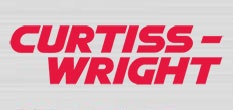Specifications
Here are some examples of the different types of tests commonly performed on specs. Many of these tests change depending on what type of specification they are being certified to.
A basic testing chart is broken into four different sections. The first is the characteristics section. This section generally outlines the type of test being performed. The next two columns deal with particular testing methods.
The first is the Government Test Method, the majority of these specs are Federal Standards for testing method procedures. The second is the American Society of Testing Materials, a not-for-profit organization that set worldwide standards for methods or testing procedures. The requirement paragraph column is a reference point back to the specification, which gives general information on what type of requirements are needed for this particular spec. The testing number actually references back to a particular type of testing method and procedure. The addendum is further explanation of the spec characteristics section.
The following example is an actual Qualification Inspection testing chart from SAE AS5272 spec.
Test Method
Test Method Requirement
Characteristics
Government
ASTM
Paragraph
Film Thickness
3.2
Aluminum
D 1400 or B 244
Steel
D 1186 or B 499
Film Adhesion
D 2510 Procedure A
3.3.1
Resistant to Fluids2.7
D 2510 Procedure C
3.3.2
Thermal Stability 3.7
D 2511
3.3.3
Endurance Wear Life 4.7
D 2625 Procedure A
3.3.4
Load Carrying Capacity 4.7
D 2625 Procedure B
3.3.5
Aluminum Corrosion 5
D 2649
3.3.6
Sulfurous Acid/Salt Fog 6
FED-STD-791
3.3.7
Salt Spray ( Fog ) 5
B 117
3.3.8
Solid Content ( See 4.4.2 )
3.3.9
Storage Stability
FED-STD-791
3.3.10
1 Film thickness is determined after panels are air dried then baked for 120 ± 5 min at 150 ± 15°C (302 ± 27°F) for aluminum or 60 ± 5 min at 204 ± 15°C (400 ± 27°F) for steel.
2 Test fluids shall be in accordance with Table 2
3 Any condensation shall be removed with clean, dry compressed air. The dried panel shall then be subjected to the film adhesion test.
4 The surface of test pins and vee-blocks shall be pretreated with phosphate in accordance with DOD-P-16232, Type Z or Type M, Class 3 with a weight to DOD-P-16232, Type Z or Type M,
Class 3 with a weight of 11 to 22 g/m2 after grit blasting, 180 to 220 grit aluminum Oxide, 50 to 60 RMS.
5 All lubricant film thickness must conform to 3.3 when prepared in accordance with 4.3.2 before placing in salt fog cabinet in accordance with ASTM B 117.
6 The panels shall be subjected to four cycles. Each cycle consisting of 2 h spray time and 24 h drying time before inspection.
7 When performing ASTM D 2510, ASTM D 2625, or FED-STD-791 test methods, use naphtha, aliphatic conforming to TT-N-95 followed by acetone or any environmentally safe Trichoroethylene,
MIL-C-81302, Trichlorotrifluoroethane, or MIL-T-81533,
1,1,1-Trichloroethane.
As with the above Qualification Inspection testing, the chart below lists fluids that are tested according to certain specs. A wide variety of testing is done to make sure the products meet the requirements in the spec. Many times the fluids test will refer to another spec for classification on the methods and procedures of the testing. The fluids test in each spec often changes due to requirements of the specs.
The following example is an actual fluids testing chart from SAE AS5272 spec.
